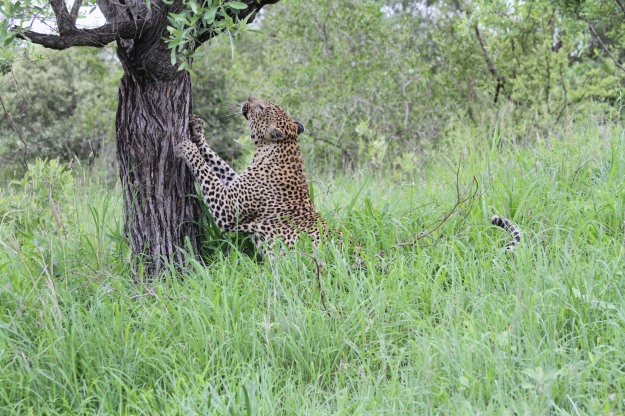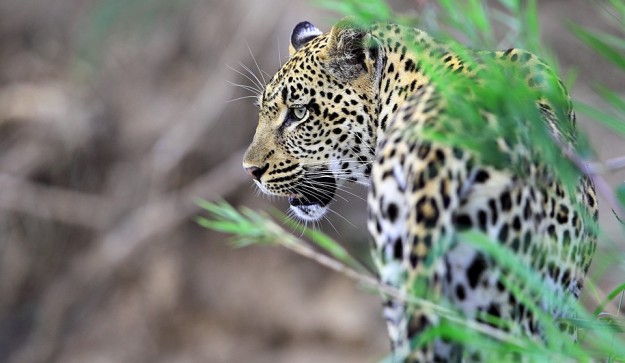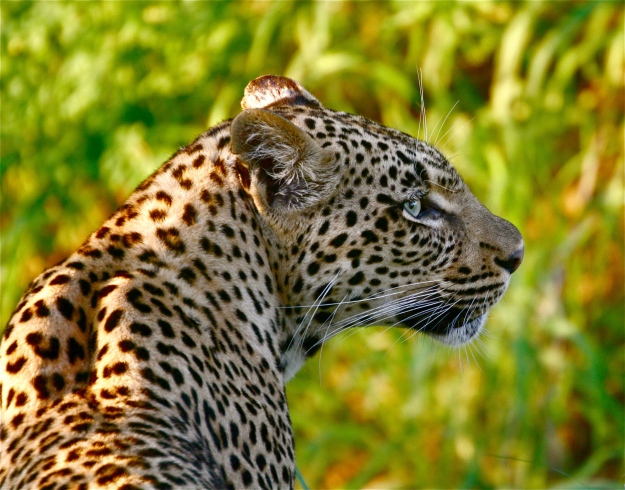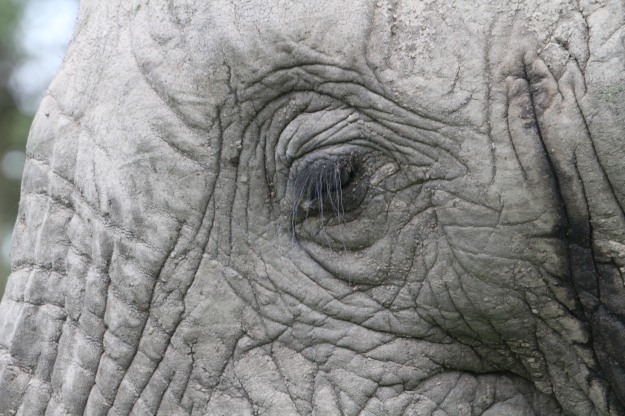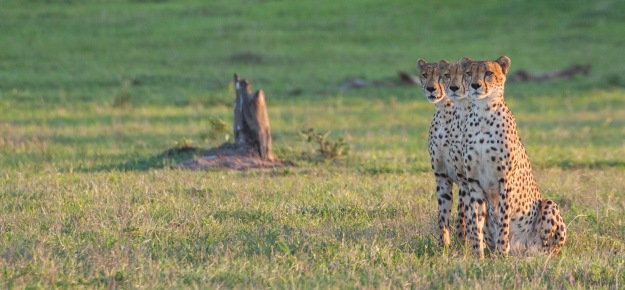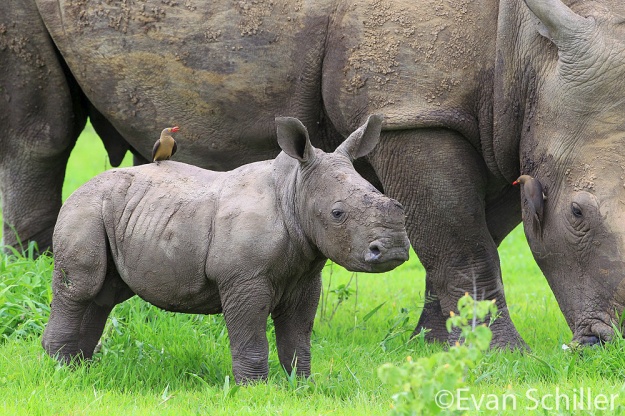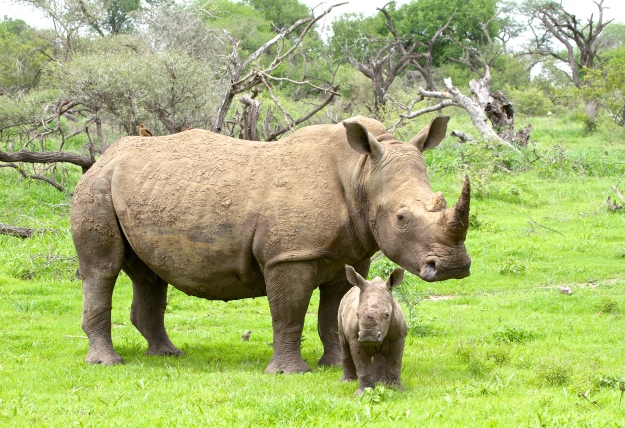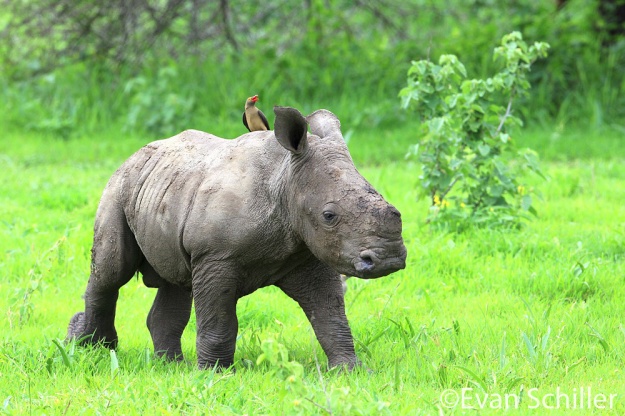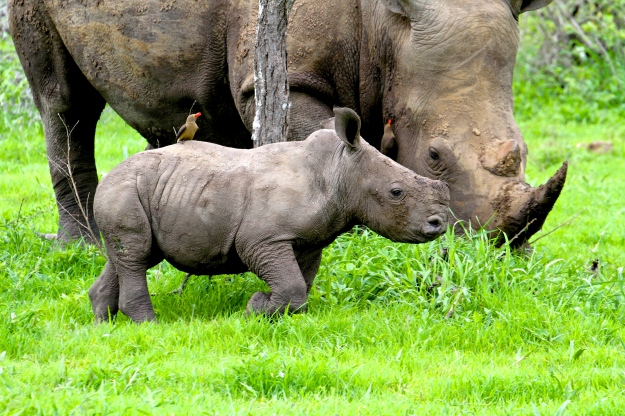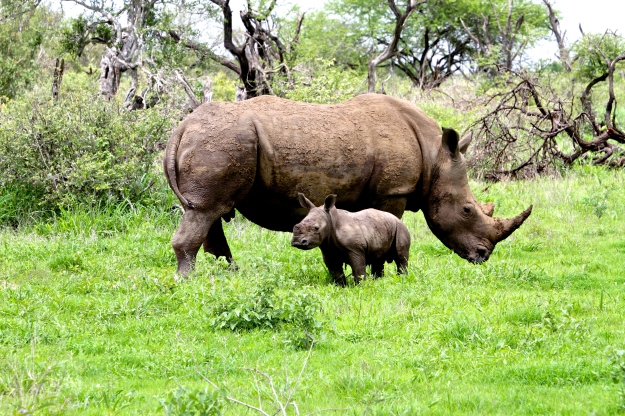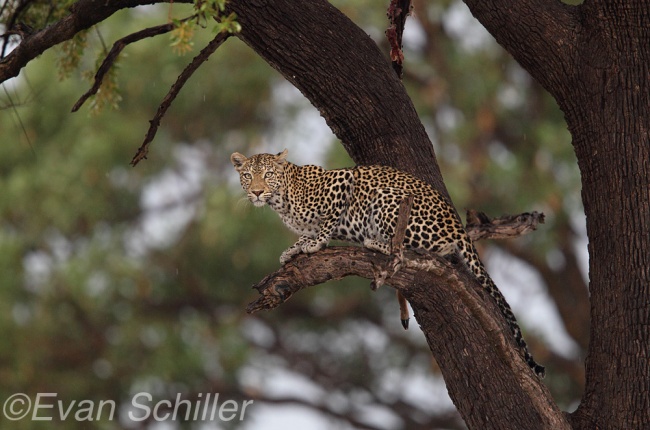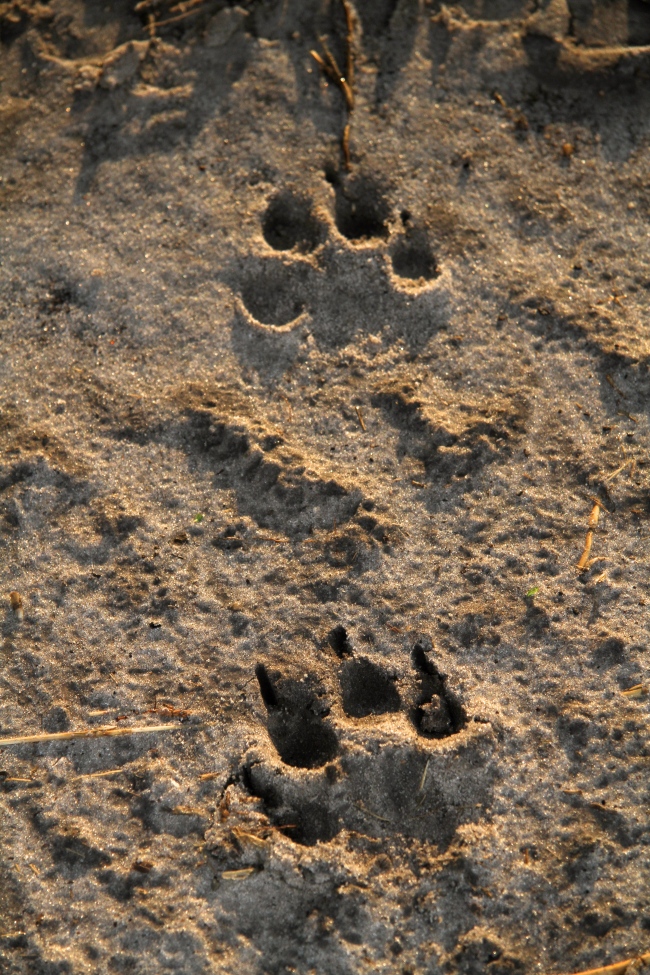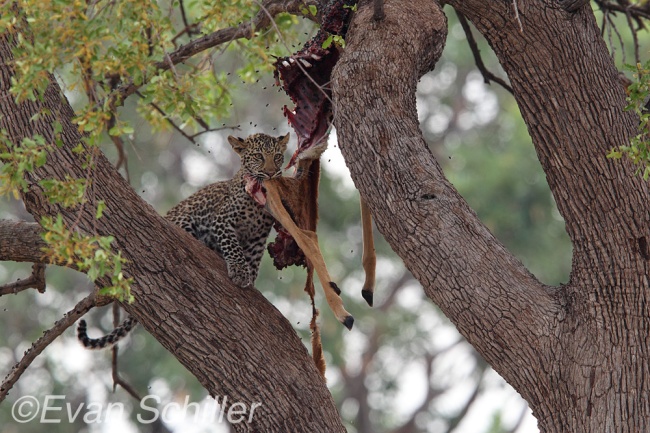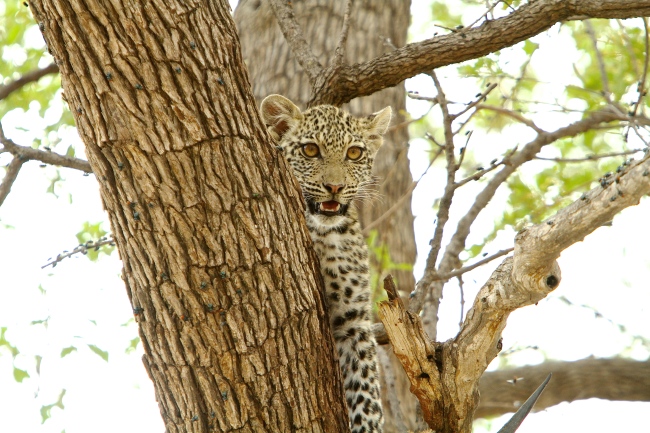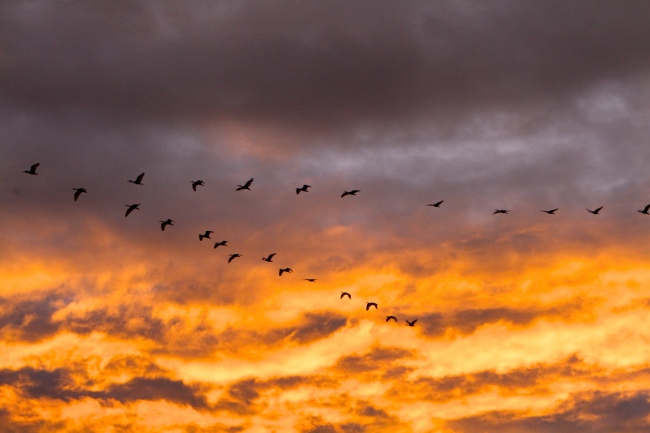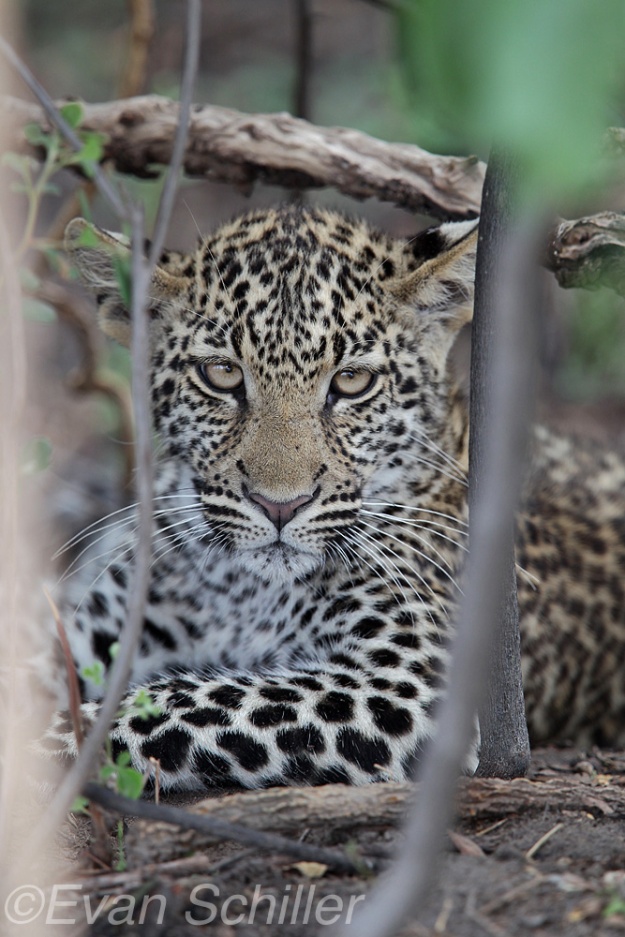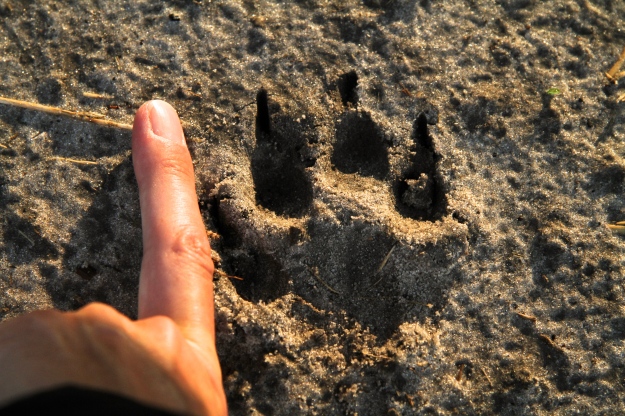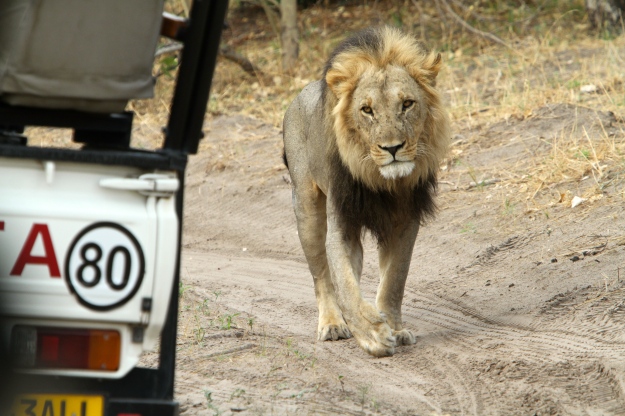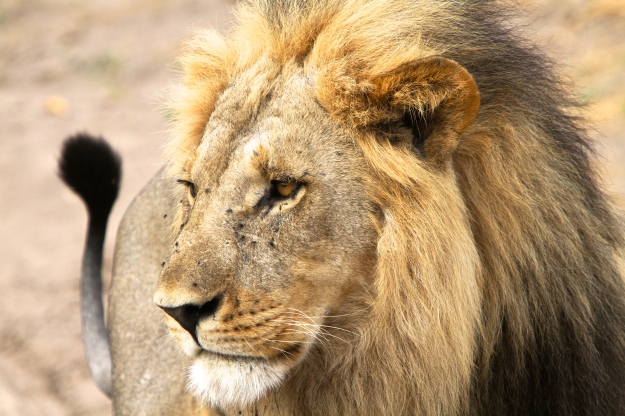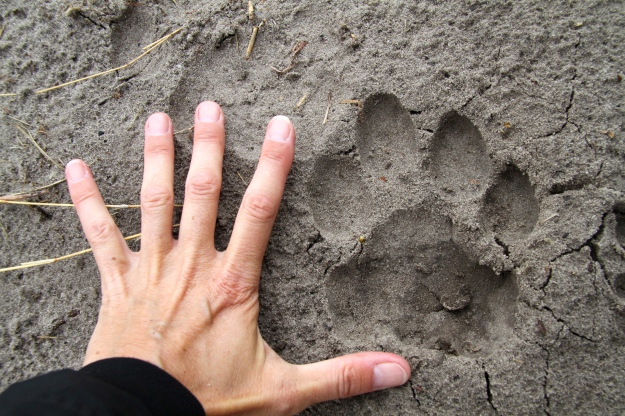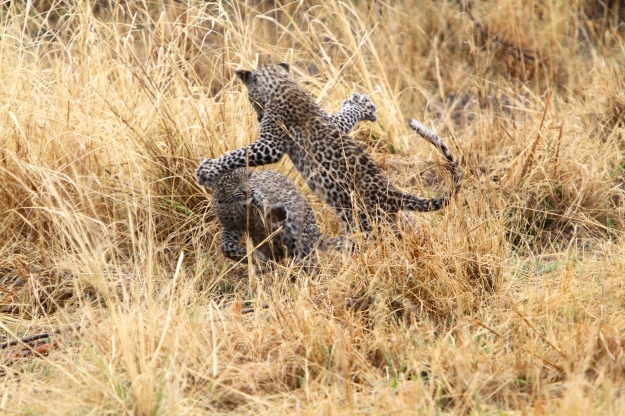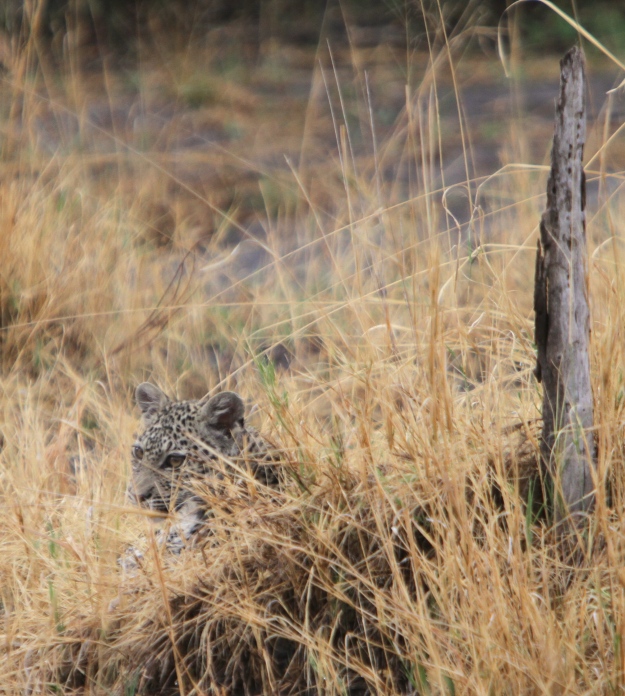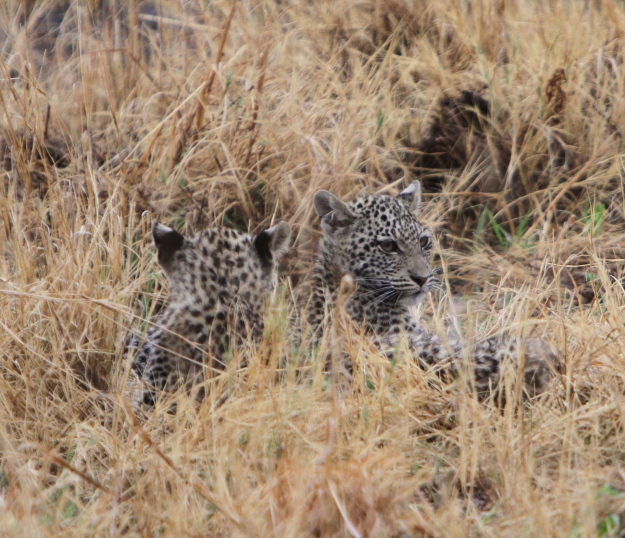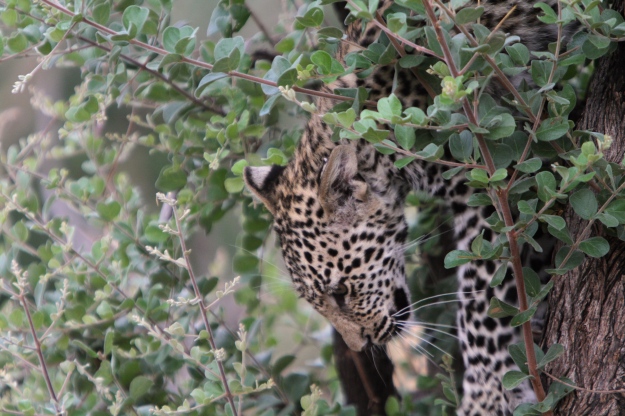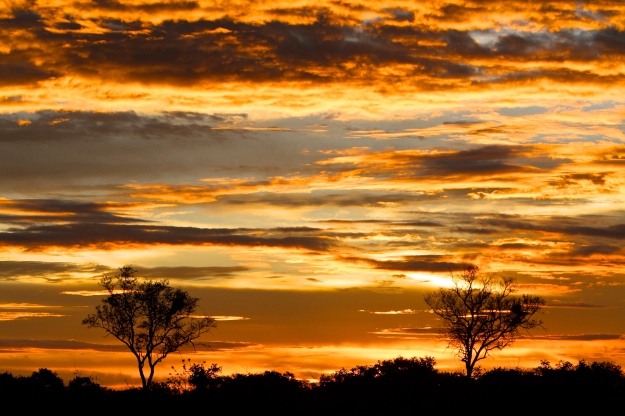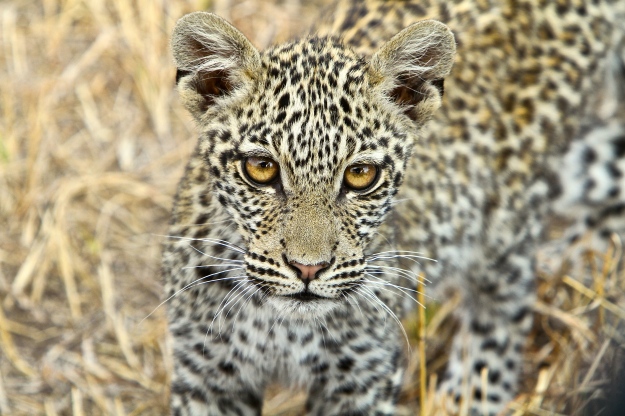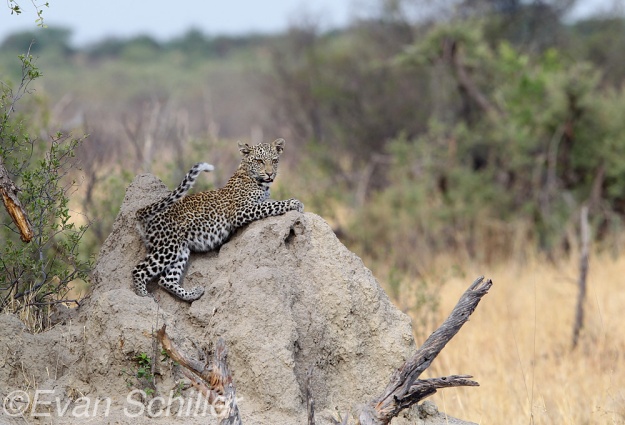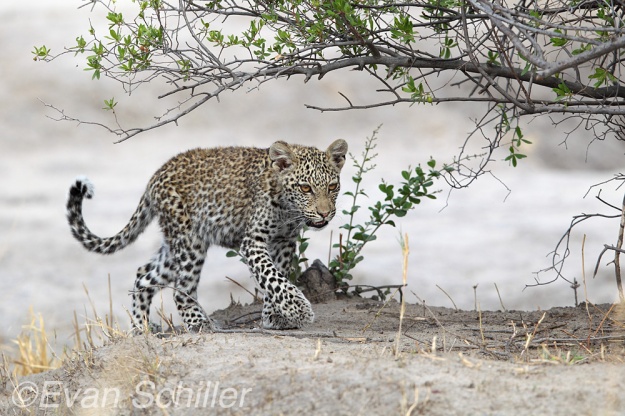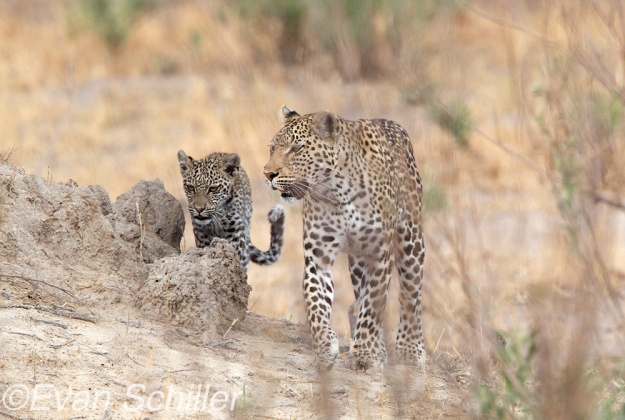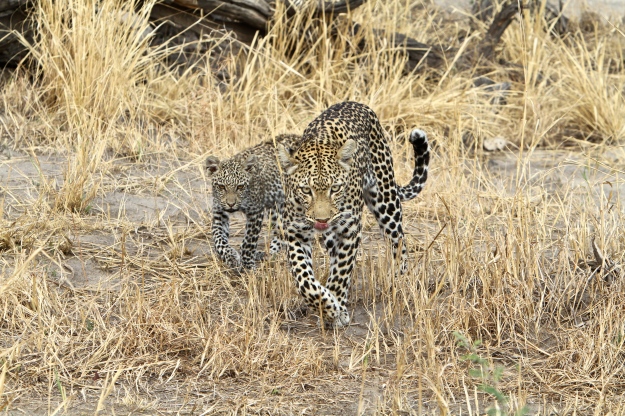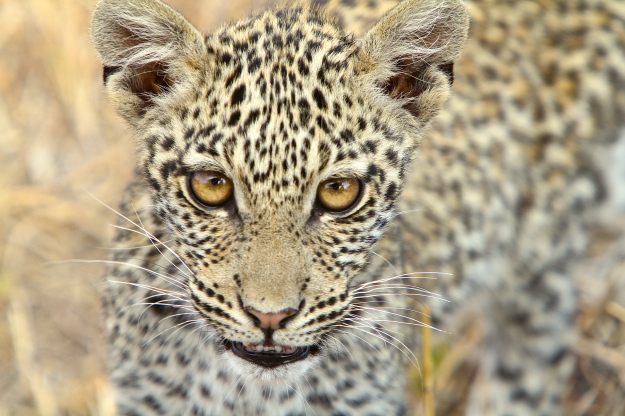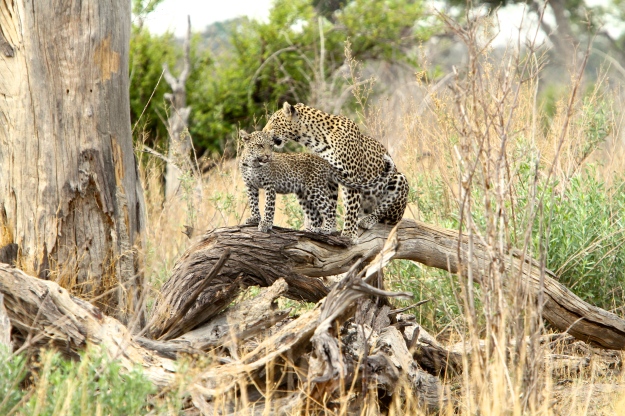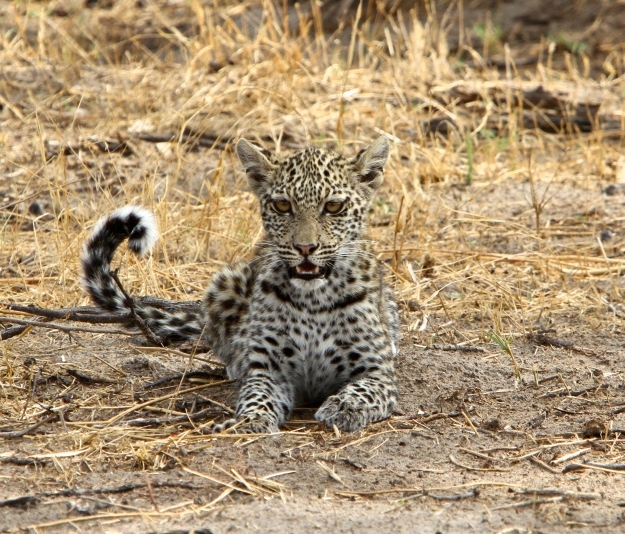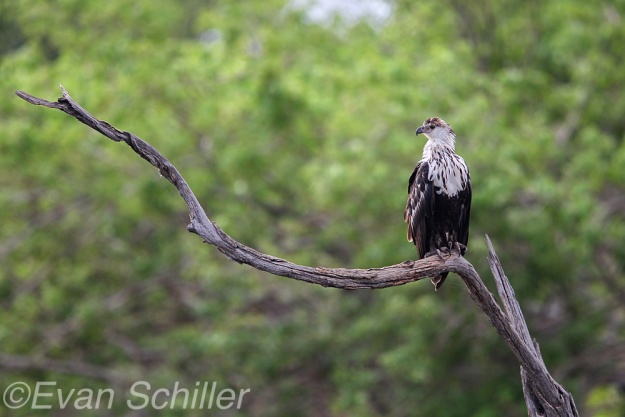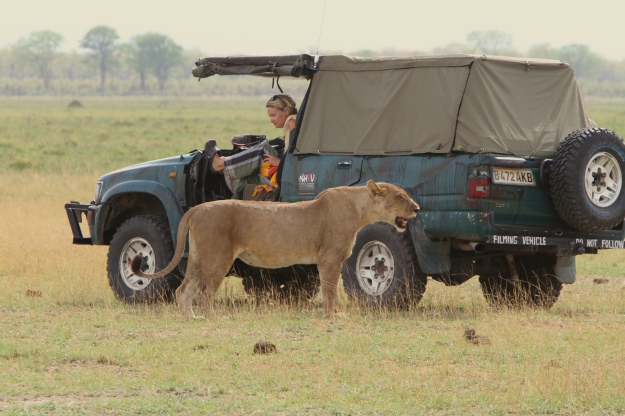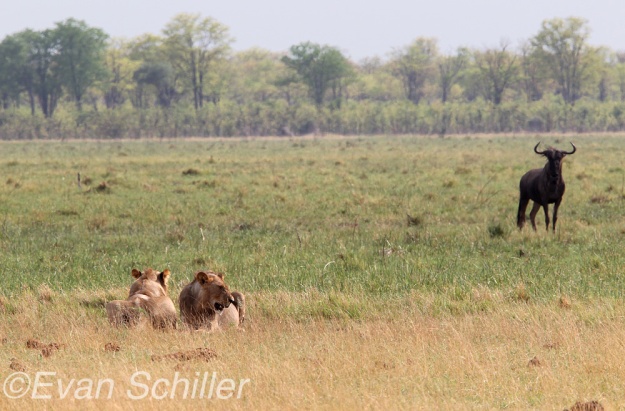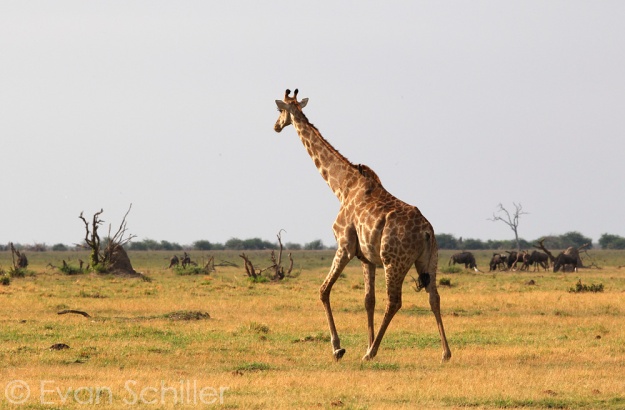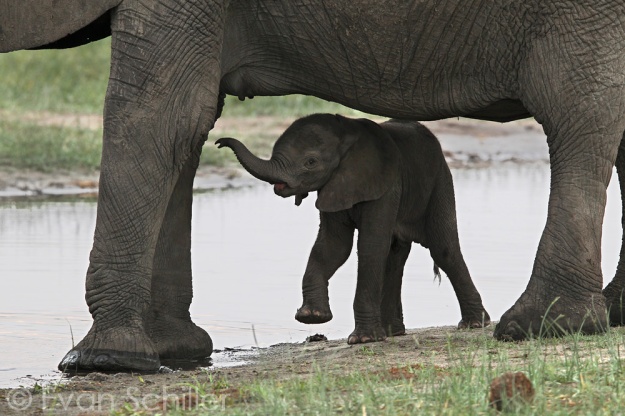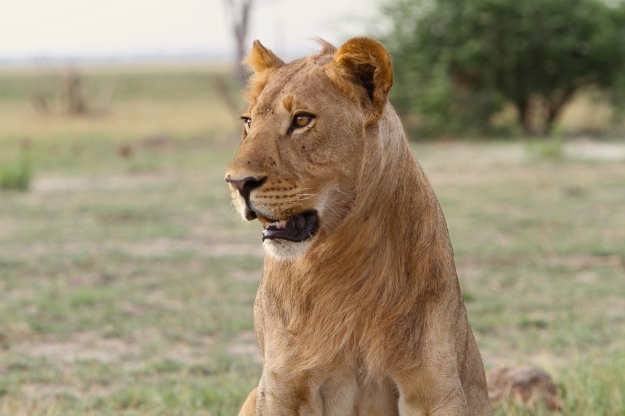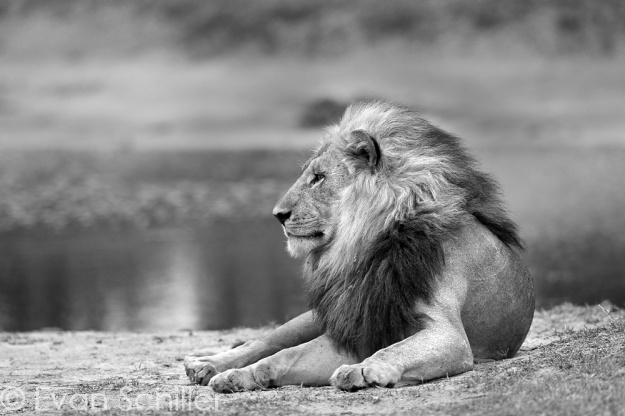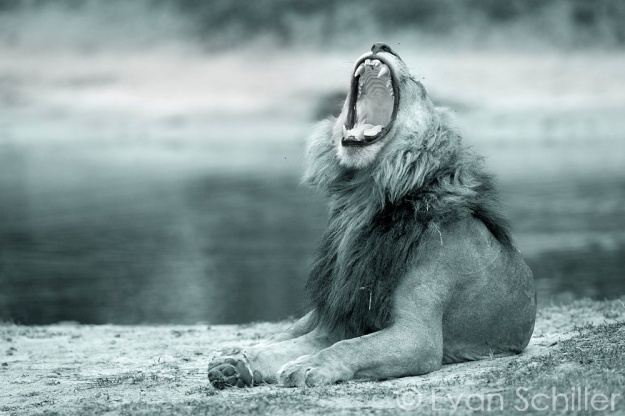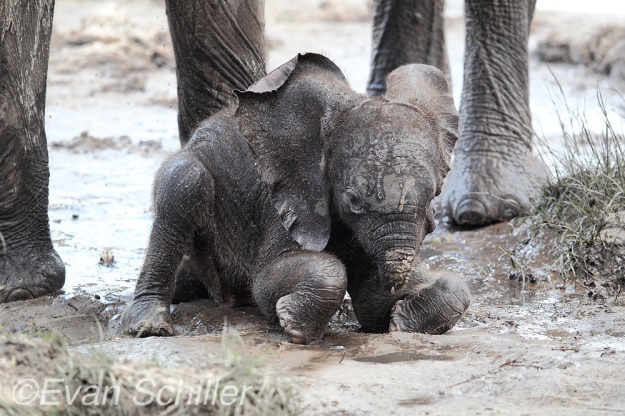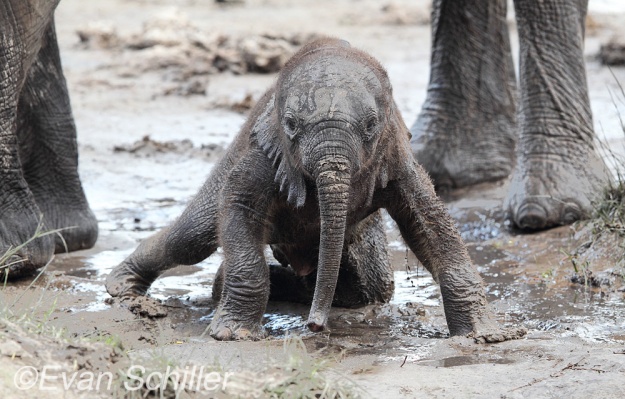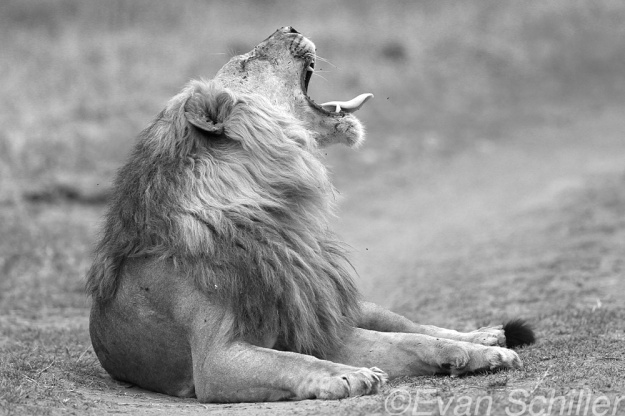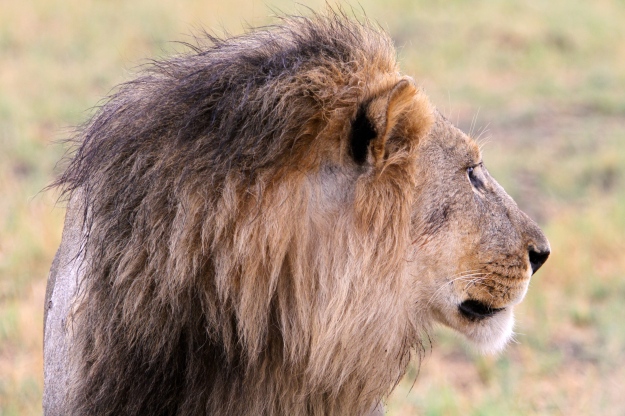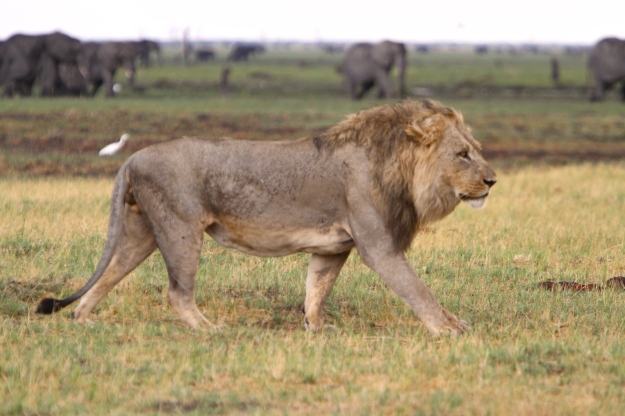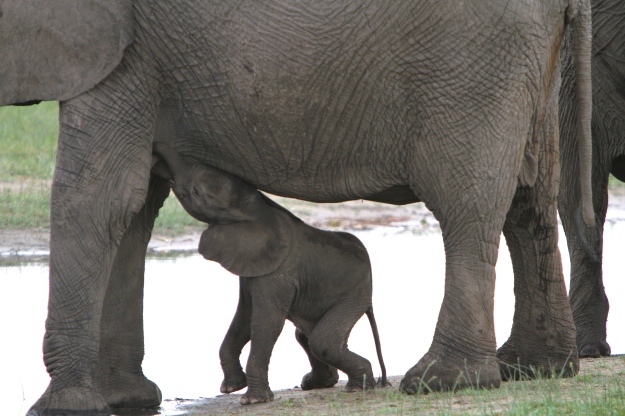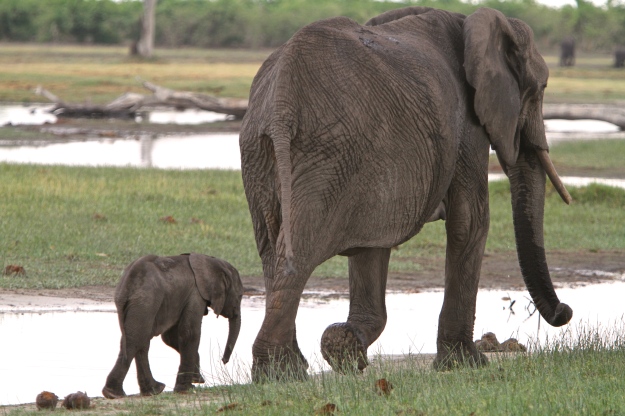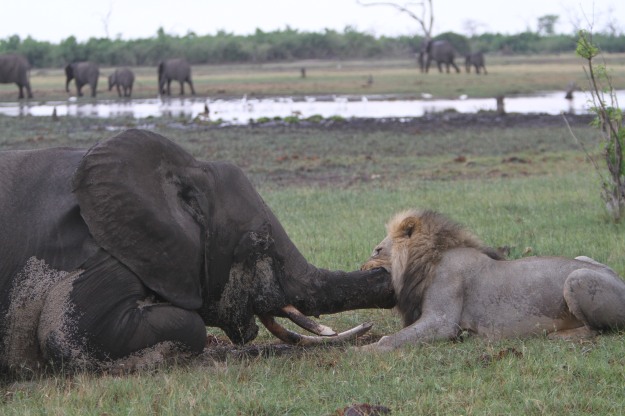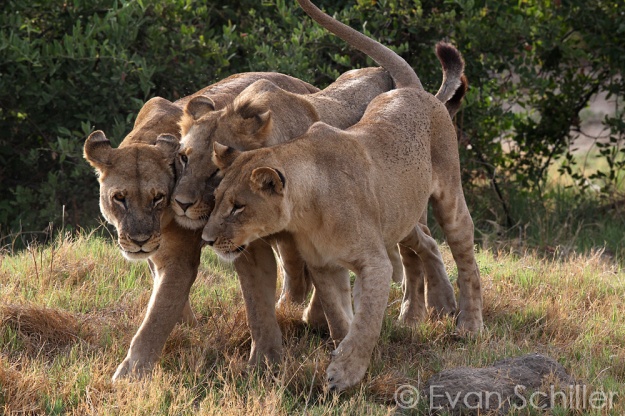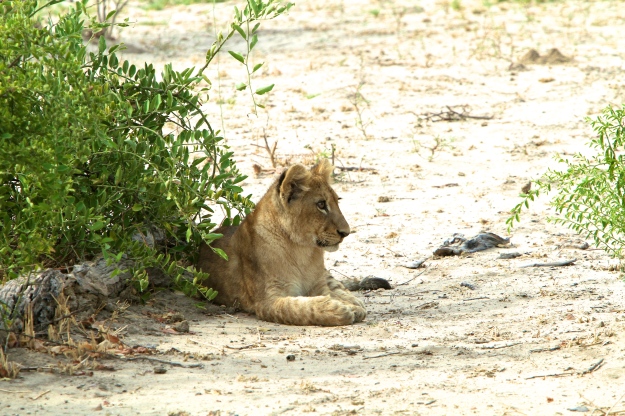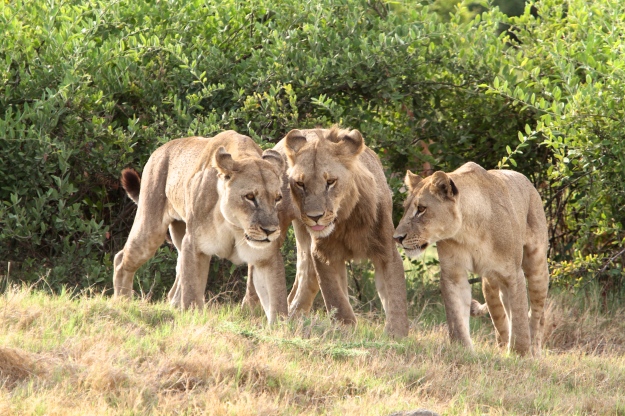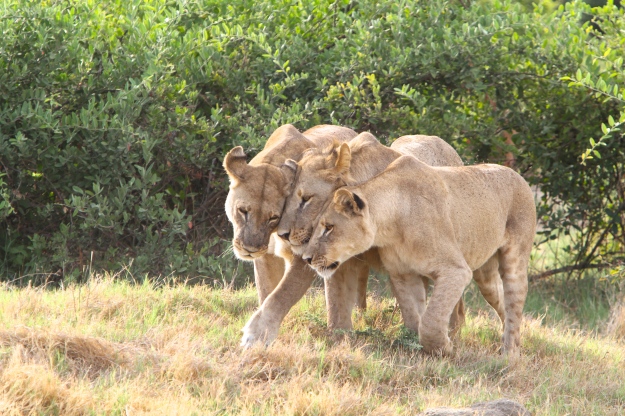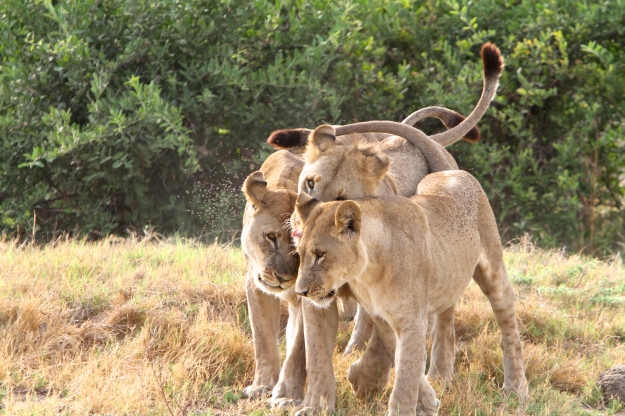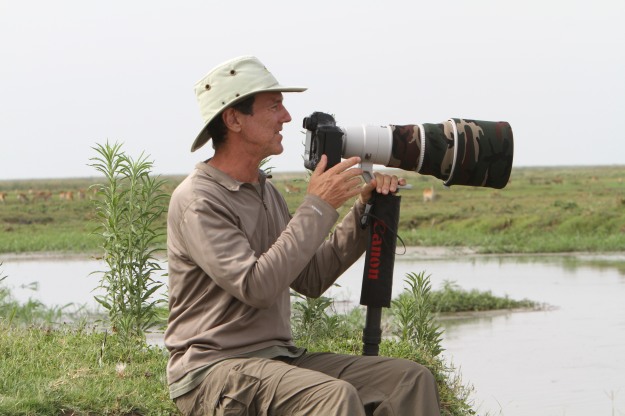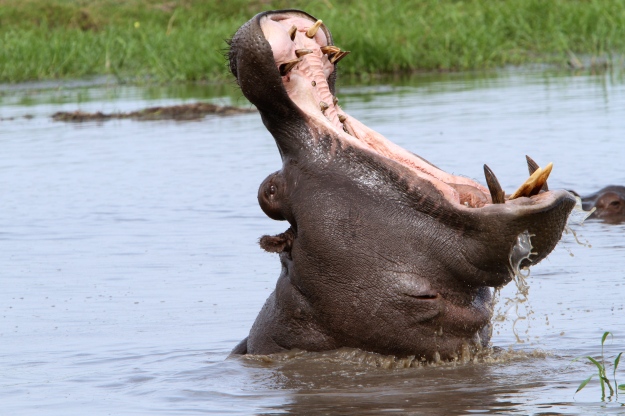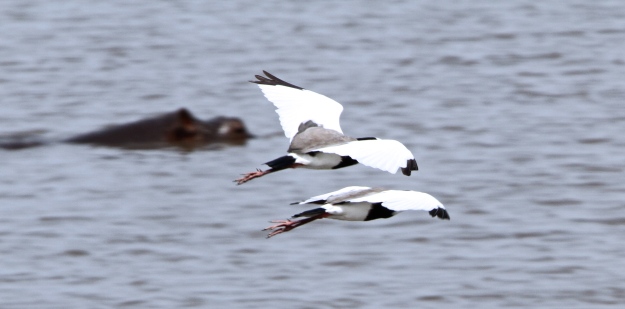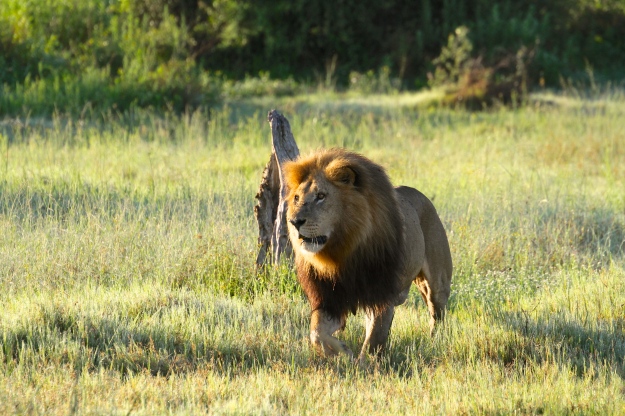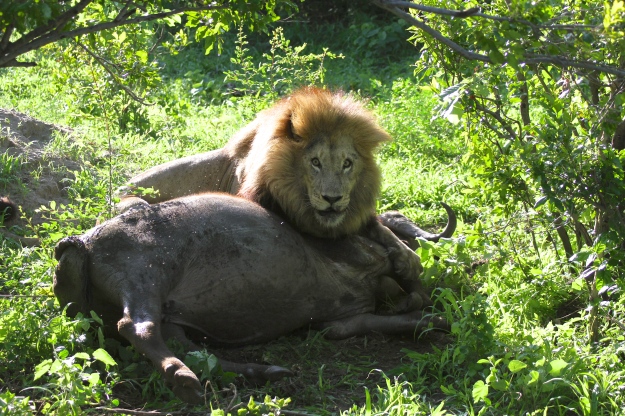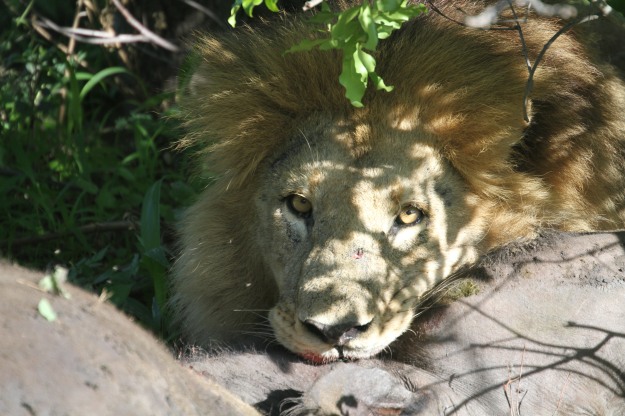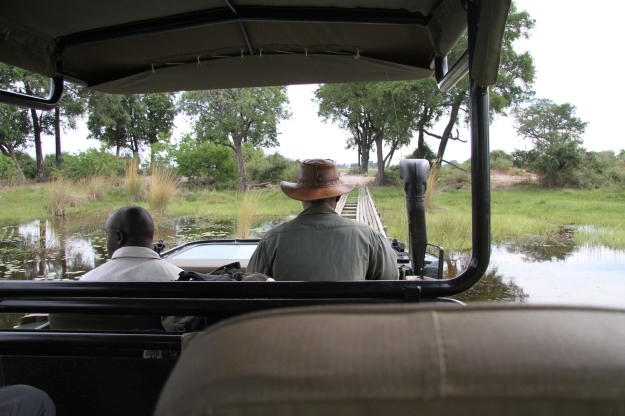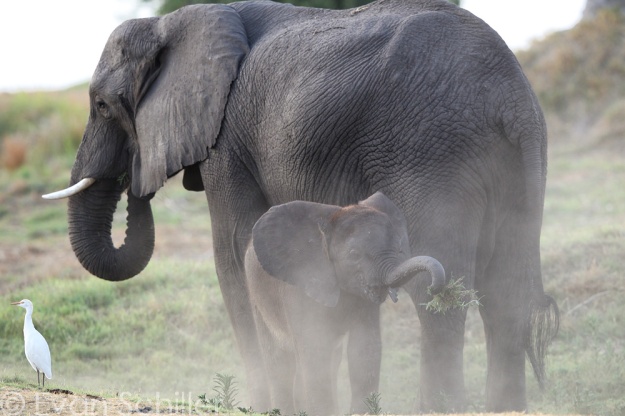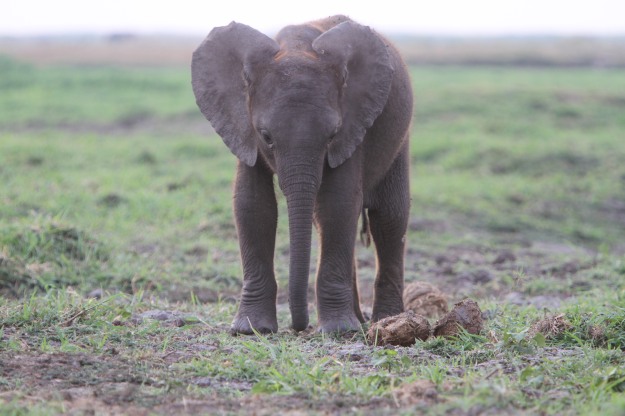They say you always remember your first, well my “first” was Dean Wraith. I am, of course, talking about my first safari guide and our first trip to the Mala Mala Game Reserve in December 2009. Mala Mala is located in the northeast corner of South Africa in an area known as the Sabi Sands. It shares a 12 mile long unfenced border with the west side of the renowned Kruger National Park. Wildlife is abundant and Mala Mala is especially known for its healthy leopard population. The “Big Five” (Elephant, Lion, Leopard, Rhino and Cape Buffalo) are almost guaranteed to be seen. If you are fortunate, you may also get a chance to participate in a Wild Dog chase or see the more elusive Cheetah. So what makes the difference between a good safari and a great safari? I believe the answer is simple, your guide. This is the person who wakes you up in the morning and puts you to bed at night, just without the sleeping part.
I now consider us somewhat experienced “safarians” having traveled to the African continent three times with two trips to Mala Mala, two trips to Duba Plains (Botswana), two trips to Selinda Camp (Botswana) , one trip to Zarafa Camp (Botswana) and one trip to Savute Safari Lodge in Chobe National Park (Botswana). The camps each offer their own unique experience with differences in flora and fauna, and the guides put their own twist on that experience. We have had three guides, in particular, whose passion and expertise made our safari experience with them extraordinary.
My first “Guide Post” is an interview with Dean Wraith. In addition to being a guide/ranger, he is a talented photographer who always angled our open air vehicle so that Evan could get the best shots possible. His keen sense of anticipating the animals’ moves and moods made all the difference. I give him extra kudos because we shared a vehicle with another serious wildlife photographer and her husband. We were always the first vehicle out in the morning and the last to return at night. The camaraderie was so good amongst the five of us that we returned the following year with this same Dutch couple to share another vehicle, again with Dean at the helm.
Lisa: A bit on your background; where did you grow up and did you get to spend time in the bush at an early age?
Dean: I grew up on the East Coast of South Africa in an area called Zululand. My earliest memories of the bush are visiting the Hluhluwe-Umfolozi Game Reserve with my family. I was lucky enough that it was only a couple hours from home and we would go on a regular basis.
Lisa: What inspired you to become a guide? Was there any particular person or experience that motivated you to move in this direction?
Dean: Guiding was never my first choice and to be honest I didn’t really have an idea what or how guiding worked. In my final year of studying we had a change in lecturer; Chris Galliers came in and changed my perspective on what was available out there. He suggested we think about guiding as a path after we finished and he helped me get an interview and ultimately my first guiding job at Mala Mala Private Game Reserve. Chris was a guide at Mala Mala himself.
Lisa: What kind of training/certification do you need to become a guide? What does it entail? Are there a lot of programs available in South Africa to accomplish this?
Dean: I did a Diploma in Game Ranging and Lodge Management. Within that we had the opportunity to complete a number of FGASA levels and qualifications. FGASA is the Field Guides Association of Southern Africa and they set the standards for guiding qualifications. I specifically went through a training provider called Eco-Training. There are more and more training providers popping up as the need for more guides increases. I think the most important thing it comes down to when choosing which provider you will go with is the instructors. They make all the difference, they give you the base to be able to build and develop.
Lisa: How did you come upon the Mala Mala opportunity? What is the most challenging aspect of the job? What do you love most about it?
Dean: Our lecturer at college helped me get the interview and recommended two of us for the job, both of us were hired and we started early November 2007. All in all I spent around 4 years at Mala Mala on and off. The most challenging part is finding a balance. What I love most about the job…THE JOB. I count myself incredibly lucky to have had the opportunity to have worked at Mala Mala.
Lisa: Provide some detail about “a day in the life” of a Mala Mala guide.
Dean: I think what makes Mala Mala such a unique safari experience is the freedom to spend as much time in the bush as you want and that means that no 2 days are the same. But on your average day most rangers will wake up between 5h00 and 5h15. Then it’s a quick shower and shave and wake-up calls before heading down to make sure the vehicle is prepped and ready to go before having a few cups of coffee on the deck. After the caffeine fix you head out on game drive which normally lasts anywhere from 3 to 4 hours. Then it’s time for a bite to eat with your guests, breakfast is a great opportunity to chat about the drive and gives the guests a chance to elaborate on some of their questions from early or get a little more information on some of their favourite topics. After breakfast is normally a bit of a walk with the guests just to stretch the legs and help get the digestive process on the go. Then there is an opportunity to get some down time before lunch, normally this is a good opportunity to go through some photos or get in some exercise or just relax and watch a series or 2. Lunch is next and this is normally a very relaxed affair with either it being your first meal with new guests or a chance to get to know your stay over guests a little more. After lunch is a good time to sneak in a quick power nap. After catching up on your much needed beauty sleep it’s time for a little afternoon tea and then back out into the bush. Evening game drives again vary anywhere between 3 and 4 hours again. Getting back from drive there is normally time for a quick shower then down to the bar for a pre-dinner drink and a chance to start unwinding. Dinner is normally more of an event with singing and 5 courses and good wine so it ends up being the most festive meal. After walking the guests back to their room after dinner it’s time for some good shut eye and the day is done.
Lisa: So you are basically “on” about 18 hours a day for weeks on end. How many weeks do you work before you have a break in your schedule?
Dean: We worked a standard 8 weeks on and 2 weeks off. Now it has moved to 6 weeks on and 2 weeks off.
Lisa: You mention “striking the right balance” – how easy or difficult is it to move from living six to eight weeks in the bush to an urban environment? Is one transition more difficult to make than the other?
Dean: It was definitely more difficult to transition back to normal life in the city. Just trying to get back into a normal routine was tough, but then dealing with everything that comes with city life is tough.
Lisa: So here’s my big question, what makes a good guide?
Dean: I think passion is really important, having a deep love for what you do is key. Otherwise I think the routine and constant dealings with people can become overwhelming. Then things like a good all-round knowledge base, good bush skills, people skills, humility and professionalism are all important.
Lisa: I can think of a couple of experiences with you that were particularly memorable for Evan and me and gave us some insight into good guiding qualities. On one of our morning drives we were just about to stop for coffee and stretch our legs when we heard a monkey screeching somewhere in the trees above us. You explained that he was sounding a predator alarm call. The first thing you told us to do was to find the monkey in the trees and see if we can tell which way he was facing – that would tell us which direction to look for the predator. The tree canopy was quite large and dense and we never got a fix on the monkey or the predator, despite making a couple of wide circles around the general area. After about 30 minutes we stopped in a wide open field for our long-awaited coffee break (“wide open” being key as we wanted to avoid anything surprising us). We had just packed up breakfast and were back in the vehicle, when Hennie van Heerden spotted a large male leopard drinking down by a water hole. The big cat was probably about 400 yards away from us. We surmised this was the guy that the monkey had probably been sounding the alarm on. New alarm bells were now going off in the form of a large herd of impala who had also just noticed the leopard. The impalas were all snorting loudly and stomping their feet in unison. I was surprised to learn from you that rather than try to run, the herd was signalling to the leopard that they were very much aware of his presence. A couple of hundred yards separated the leopard from the herd. Each stood their ground. We were able to great some great shots of the leopard before he casually moved on by.
Another leopard story with you that led to one of Evan’s all-time favorite shots (and the cover shot for The LEO Chronicles) is the afternoon we followed the Tamboti female as she headed towards the Sand riverbank, densely packed with eight foot tall reeds. The other vehicle that had also been following her gave up and turned around. You looked at us and we gave the nod to head into the reeds after her. It was tough traveling but you were able to keep up enough for Evan to catch this shot just before she slipped away. This was a bit of a costly reward, at least for you. The vehicle’s tow hitch got stuck in the unevenness of the river bed’s edge and you needed to do some serious digging to get us out. I asked what we could do to help. You were covered in sweat from all the shoveling. You said, “Stay in the vehicle but keep your eyes open for anything that might want to eat me”. That was the fastest we have ever gotten out of jam. Not only did you remain calm, but you maintained your sense of humor throughout. And I took your request very seriously about keeping my eyes open!
Lisa: What’s your favorite time of the year at Mala Mala and why?
Dean: All the time☺ sorry for the smiley face but needed to do it. Any time in the bush is good time. But if I had to pick a specific time then it would have to be spring/early summer, September to early December. It’s the first rains and the colour is starting to come back to the bush. It’s the baby boom and the bush is crawling with young antelope. The bush is still “thin” enough to make viewing good and easy for photography.
Lisa: Share your most memorable experience in the bush. What made it so special?
Dean: The most memorable experience was probably my first game drive. Just the experience and mixed feelings of excitement and nervousness. Seeing the animals at such close proximity and not having a driver’s side door is something that takes a lot of getting used to. Then all the added stresses of remembering the roads and keeping track of what is happening on the radio, it all makes for an extreme adventure.
Lisa: Please share your most memorable guest stories – funny, outrageous, stupid, whatever suits you.
Dean: Guests are as interesting as the animals, different cultures and nationalities, different beliefs and point of views always makes for interesting interactions.
Lisa: You are being way too circumspect, but you make a good point. I was hoping for a good laugh, even if it was going to be at my own expense. I did follow-up on your suggestion a couple of years ago and read Peter Allison’s “Whatever You Do, Don’t Run – Tales of a Botswana Safari Guide”. Absolutely hysterical and apparently quite true.
Lisa: You’re a great photographer. When did you get started and how have you learned the craft?
Dean: I have enjoyed photography for as long as I can remember. Taking photos at Mala Mala was a no-brainer. With the amount of time and quality of game viewing the opportunities are endless. I am mostly self-taught, reading, listening and talking to other photographers and then trying all the different techniques.
Lisa: What kind of equipment are you using today? What size lenses do you use most often?
Dean: I am still using Canon and have upgraded to a 70D and a 70 – 300mm f4 – 5.6 L lens.
Lisa: Glad to hear we are still all part of the same extended Canon family.
Lisa: What’s your favorite animal to photograph and what is its personal draw to you?
Dean: Predators are great to photograph and probably top most people’s list. Elephants are my favourite; anytime you find them they will be doing something. The texture of their skin and interactions between each other make them a fun species to photograph.
Lisa: This makes perfect sense now. I can think of a couple of elephant interactions that we had with you that were really special. There was that one afternoon drive where we found ourselves in an open field near Rattray’s Camp at dusk. The field was full of a large herd of grazing elephants. It was getting too dark to get any photographs, even at the lowest f-stop but we sat quietly as the elephants, including some of the babies, came close to check us out. You said we were very safe because it was elephants coming to us, not us inserting ourselves in their space.
I also remember a late morning drive near the bridge where a particularly inquisitive young male came very close to us, ie., he could have reached into the vehicle with his trunk. We were basically taking pictures of his eye, he was that close. It was cool to see how long an elephant’s eyelashes can be. You were focusing on his ears to gauge his mood. His ears were telling you that he was very relaxed.
Lisa: So please share three of YOUR favorite photos and the stories behind each of them.
Dean: This photo of a Black Rhino in full flight is one of my favourite, mainly because seeing a Black Rhino is just so special. This sighting didn’t last more than 4 or 5 minutes. We came up over a blind rise with a corner so as we crested the rise this rhino was not more than 20m from us. She jogged off behind a tree and turned around to look at us. She huffed and puffed and trotted around a little before deciding to have a go at us. She stormed us and stopped about 6 or 7m away from us and charged off into the bush.
This next photo was taken at Mala Mala last year. A giraffe had died in the south of the reserve and 3 lions had laid claim to it. We decided to make the long drive south and on the way down bumped into 2 male lions having a bit of stand-off. We couldn’t really see them in the thick bush. We decided to carry on to the giraffe carcass and see what was going on there. We arrived and 2 lions were busy feeding with quite a few hyenas hanging around. After about 15 minutes one of the other rangers came across the 2 males having a stand-off moving towards the giraffe. The 2 lions picked up and ran off and the 2 males arrived on the scene. Then chaos broke out, the 2 males who were from different coalitions started climbing into each other and it was a real fight. Most times it is quite a bit of vocalising and posturing, but these 2 decided to throw down properly.
At one stage we had a coalition of 4 male cheetah that started moving onto Mala Mala from the north and this was the first time I had seen them active. We had a great afternoon with them mostly because there were very few vehicles out and that meant we had all the time we wanted with these four. Just as the light was getting good all 4 of these boys started getting active and were eyeing out a small herd of blue wildebeest with a few youngsters in the group. We moved ahead of the cheetahs to try and get the stalk and movement towards the herd and then hopefully a chase. These 3 sat down and it all just fell into place. The whole time they were sitting there I was trying to get the right settings and just waiting for them to get up and move. They didn’t and the subsequent shot turned out to be quite a unique composition.
Lisa: When was the Cheetah(s) photo taken? (I showed it to Evan and he was blown away). Is that coalition still around? Where was their territory? I remember you and Hennie talking about them in 2010.
Dean: It was actually taken with Hennie just a few days before you and Evan arrived. They were mainly in the north eastern section close to Kruger and then the northern parts of the Sabi Sands. From what I understand the guys haven’t seen them since early 2012. There were actually quite a few different cheetah around. Several small male coalitions and then a few females too.
Lisa: You mention the rare sighting of the black rhino and why that photo is special. From all that I have read, poaching continues to be a real threat at Kruger, so how does Mala Mala and the other contiguous reserves protect themselves against poachers? I have to say that I always felt completely safe while at Mala Mala, are the animals equally safe?
Dean: Poaching is a real threat everywhere. Rhinos are being hammered in the Kruger and it comes down to not enough man power to cover the whole area. Mala Mala and the Sabi Sands have to rely on private security companies to patrol and police the area. The biggest risk for Sabi Sands is the open boundary with the Kruger which does give quite a vast thoroughfare for poachers. From what I have read and understand rhinos are going to be moved from Kruger.
Lisa: Evan and I have gotten to know some of the individuals at Great Plains Conservation who are behind the “Rhinos without Borders” project to move rhinos from South Africa to Botswana. I got the impression that some of those expected to be moved would be from Kruger. That is definitely a good thing.
Lisa: On the topic of feeling safe, a lot of people ask me if I ever felt scared while out on a game drive, especially given that we are in open air vehicles and some of the animals come extremely close. I have always had the same response, “Never”. I think a big reason for that is the vibe we got from you. You were always paying attention to the big picture including the animals’ mood, what their ears may be communicating, were there young ones in the vicinity to protect, our ability to back-up the vehicle, etc.. This is my segue into the pro’s and con’s of carrying a rifle. At Mala Mala it is standard to have a rifle anchored to where the windshield would be. I specifically remember asking you why you only loaded three of those extremely long bullets into the rifle each morning when the barrel could, in fact, hold at least six . You responded, “if we ever have to use more than three bullets, we’ve got bigger problems to deal with…” So, have you ever had to use your rifle at Mala Mala?
Dean: I have never had to use a rifle ever, whether it be on one of my walking trails or game drives. At Mala Mala the rifles were more for when we left the vehicle to track and even then I think every ranger would agree with me that if they ever had to shoot an animal it would be the worst day of their career. I have worked at reserves since Mala Mala where we didn’t take rifles out on drive. I personally prefer not having a rifle on drive purely because you probably behave in a safer manner because you don’t have that safety net.
Lisa: That’s good to hear and makes perfect sense. In Botswana, rifles are not allowed and the guides there echoed your response – without a rifle you act smarter to avoid potential animal conflicts.
Lisa: What reserve is your own personal favorite and what makes it so?
Dean: Mala Mala is a special place and I appreciate having had the opportunity to have worked there. I love any reserve or protected area because each one offers something different, but Mala Mala would definitely top my list.
Lisa: Any particular countries or regions on your own “wish list” to visit?
Dean: My list grows and grows each and every day. Namibia is such a unique destination and the exploration opportunities are endless. The rest of the places on my list are specific to a mammal species that interests me, Gorillas in Uganda, Grizzly Bears in North America, Tigers in India, Polar Bears in Svalbard. To be terribly honest, I just love traveling and anywhere in the world I get to go would be a dream come true.
Lisa: What do you do when you’re not in the bush? What do you miss when you’re in the bush? When you are out of the bush?
Dean: I have always loved the ocean so I spend quite a bit of time fishing and just enjoying the beach. I mostly miss sport while I am in the bush. I love any sport really whether it be watching or playing. When I am not in the bush I really miss the sounds and freedom the bush gives you.
Lisa: Tell me more about the travel consultancy/agency that you have started with Victoria. Do you lead your own trips? What kind of trips do you offer?
Dean: The company is called Southern African Destinations. The idea is to lead trips all over Southern Africa (South Africa, Namibia, Botswana, Zimbabwe, Zambia, Mozambique and Malawi). The main focus is to tailor itineraries to what the clients’ interests are. Ideally we will travel with most clients but it is entirely up to them. Our main focus initially will be Scandinavian countries because Victoria is Swedish so she has the ability to translate and communicate with the clients.
Lisa: Share with me details about your most recent organized travel trip – how many guests and where did you go?
Dean: It was 15 people which turned out to be quite an interesting challenge in its own right. We started in Cape Town where we climbed Table Mountain, visited Robben Island and Cape Point, dived with Great White Sharks, got sea sick and did a few tours around the city. After that we drove the Garden Route and stopped off in Mossel Bay and then in Jeffrey’s Bay. Along the way we visited Cape Agulhas (most Southern tip of Africa), Storm’s River Canyon where we did some ocean kayaking and Jeffery’s Bay was an opportunity for some surfing. After that we flew to Durban and spent a few days in Salt Rock (Victoria and I live here and thought it was the perfect quiet beach/city break for the group). We did a lot of time at the beach, some deep sea fishing and went to watch a rugby game. The last few days were on safari at a place called Thanda Private Game Reserve which was great, we got the Big 5 plus Black Rhino and cheetah. All in all it was a great trip.
Lisa: Please share with us your contact information for SAND – Southern African Destinations?
Dean: My work email is dean@sandtravel.co.za and Victoria’s is victoria@sandtravel.co.za and our website is www.sandtravel.co.za and we also on Facebook at Sand – Southern AfricaN Destinations and Instagram at sandtravel.
Lisa: Thanks so much for sharing your stories, your time and your ongoing friendship. I am really excited about the creation of SAND. I know the two of you will make it a big success while enjoying some extreme adventure in the process!



